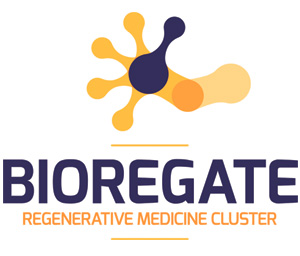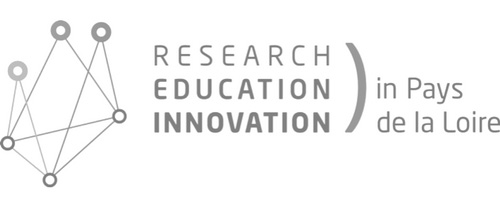Project abstract
The proposed project focuses on the 4D bioprinting of an intervertebral disc (IVD) model. Intervertebral disc (IVD) degeneration is one of the main causes of low back pain (LBP), a common invalidating disorder with considerable socio-economic impact. Conventional treatments only alleviate the pain but do not treat the condition and new bio-inspired therapies are necessary to halt or reverse disc degeneration mechanisms.
The intervertebral disc (IVD), fibro-hydraulic shock absorber of the spine, is composed of a peripheric network of collagen fibers (Annulus fibrosus, AF) that encloses a central gelatinous and hydrated structure (Nucleus pulposus, NP). A characteristic transitional zone merges these two regions together. This specific anatomy and cellular organization are responsible for the mechanical properties which define a healthy IVD.
Current regenerative therapies have focused on molding hydrogels into either NP or AF and subsequently assembling them together, failing to recapitulate the continuous physiological gradient between the two structures. This project investigates the 4D bioprinting process to propose a new model of IVD.
4D bioprinting is an additive manufacturing technology which allows, from a numerical 3D model and a cell-containing bioink, to create viable (4D) human tissues by layer-by-layer deposition of material. Centrale Nantes has expertise in the field of functional gradient material (FGM) for metallic applications.
The goal of this project is to apply this knowledge to biomaterials in order to recreate the graded zone between the NP and the AF, characteristic of a healthy IVD. In addition, Centrale Nantes has developed a high precision bioprinting device that operates under fully opened programming, enabling full control over the printing process and thus over the architecture and the properties of the printed tissue.
The experimental approach revolves around the bioink-bioprinting process-functionality of the printed IVD triptych (Figure 1). With the expertise of 2 INSERM Units (RMeS and CRTI), the formulation of the bioink has to be optimized according to its rheological, biological properties and printing resolution. More precisely, this ink must be compatible with cellular viability and tissue maturation while mimicking the mechanical properties of the printed tissue.
On a technological point of view, a printing nozzle allowing to deposit different bioinks with controlled percentages will be developed to recapitulate the gradient between the AF and NP. The approach will guarantee architectural fidelity as well as mechanical and biological functions of the printed IVD.
The deposition of the gradient will thus be done according to pre-established models that rely on a thorough understanding of the printing process and of biological and mechanical functions of the final tissue.
Finally, the bioprinted IVD model will need to meet the physiological characteristics of a human IVD in order to best study IVD degeneration. Together, the expected results will allow the study of IVD degeneration and will contribute to building a strong knowledge in regenerative medicine that will be applicable to other human tissues.

